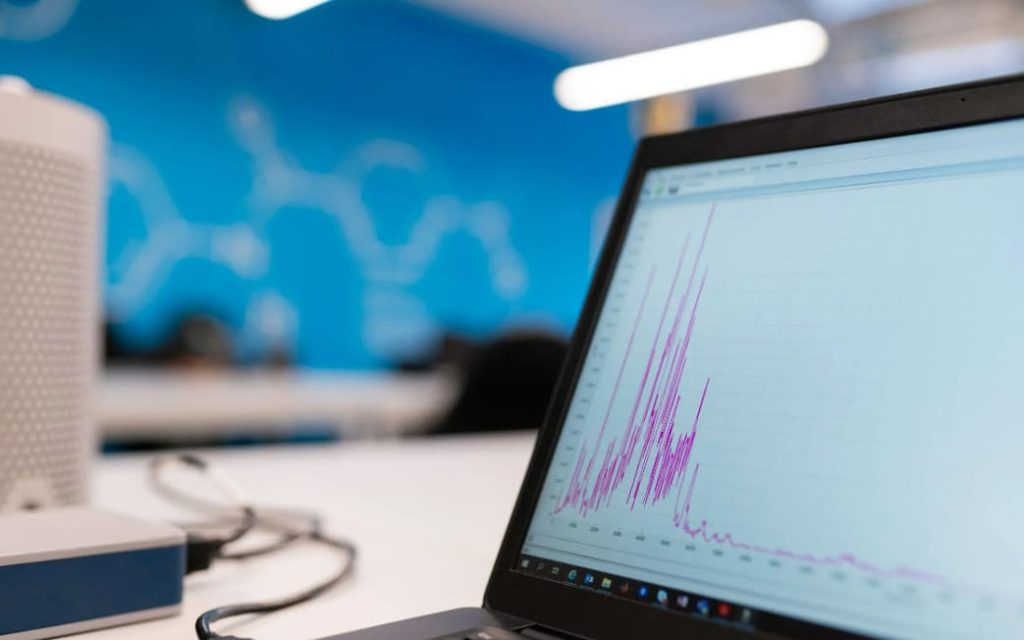DMARC, short for Domain-based Message Authentication, Reporting, and Conformance, is a cornerstone of email security. Its primary mission? Safeguarding email senders and recipients from perils like spam, phishing, and email spoofing.
DMARC enables domain owners to specify authentication practices, ensuring that it discerns legitimate emails from fraudulent ones. When an email fails authentication, DMARC comes into play. It then instructs the recipient’s email provider to take appropriate action, such as either quarantining or rejecting the message.
In our digitally fraught age, where phishing and spoofing attacks thrive, DMARC serves as a crucial defense. Beyond its protective role, DMARC offers valuable reporting insights, shedding light on authentication activities and message origins.
DMARC combines DKIM and SPF checks to validate incoming emails, preserving their integrity and source. Through DMARC policies, domain owners set the rules for email authentication, guiding incoming servers on how to treat emails that fall short in DMARC assessments.
Stay tuned as we delve into DMARC, SPF, and DKIM in our blog post, and discover how MX Layer can elevate your email security to the next level.
A Closer Look at Email Authentication Protocols: SPF, DKIM, and DMARC

Here, we’re shining a spotlight on the technical stalwarts that keep your digital communications safe: DKIM and SPF (Sender Policy Framework), the essential pillars on which DMARC relies.
Sender Policy Framework (SPF) operates as a digital bouncer, guarding the entrance to your email server. Think of it as a VIP list of authorized email servers for a specific domain. SPF records list these trusted servers’ IP addresses. When an email arrives, the system checks it against this list, allowing it in if it matches and blocking it if it does not.
DomainKeys Identified Mail (DKIM) adds a cryptographic seal to your emails. Domain owners “seal” their messages using a private key, with the corresponding public key stored in the DKIM record. Receiving email servers plays the role of the detective, verifying the seal using the public key for authenticity.
Now, let’s introduce DMARC. It’s the conductor that brings SPF and DKIM into harmony. DMARC provides specific instructions to email servers on how to deal with unauthenticated emails. From quarantine to outright rejection, DMARC ensures that only verified emails reach their destination.
SPF and DKIM are the gatekeepers, confirming server identities and nurturing trust. DMARC, as the ultimate guardian, ensures the security of your digital correspondence. For those seeking comprehensive email security solutions, explore MX Layer’s email security solutions.
How DMARC Works

By implementing DMARC, organizations acquire a potent ally in the battle against email phishing and spoofing. To gain a deeper understanding of how DMARC protects us against email phishing and spoofing threats, we explore it further within the context of email authentication.
Email Authentication
At the core of DMARC’s security architecture are two robust authentication protocols: SPF and DKIM. SPF verifies whether the sender’s IP address is authorized to send emails on behalf of the domain. DKIM confirms whether the email bears the cryptographic signature of the domain’s private key. Together, they form a formidable duo that establishes the legitimacy of an email.
DMARC Policy
Domain owners play a pivotal role in this security arrangement. They set the rules by publishing a DMARC policy in their DNS records. This policy explicitly outlines how receiving email servers should handle emails that do not meet the authentication criteria. The instructions can range from placing suspicious emails in quarantine to outright rejection, ensuring that only validated and trustworthy emails reach recipients’ inboxes.
Reporting
DMARC is not just a guardian; it’s also a vigilant observer. It generates comprehensive reports on email authentication outcomes, providing insights into SPF and DKIM alignment. These reports are valuable tools for domain owners, enabling them to monitor and analyze email traffic. They pinpoint potential issues and areas for improvement, contributing to enhanced security.
Why DMARC Delivers Exceptional Benefits

Implementing DMARC is a strategic move that brings a multitude of advantages to your organization. MX Layer offers robust reporting and analytics capabilities, empowering you to gain valuable insights into your email traffic and ensuring compliance with email authentication standards like DMARC. Let’s explore these benefits:
Improved Email Security
DMARC stands as a robust sentinel against email phishing and spoofing attacks. By establishing a standardized framework for email authentication and leveraging SPF and DKIM, DMARC rigorously verifies the authenticity of incoming emails.
Protection of Your Brand’s Reputation
Your brand’s reputation is priceless, and DMARC is your guardian in preserving it. By preventing unauthorized use of your domain name in phishing or spoofing attacks, DMARC ensures that your customers receive only genuine communications from your organization.
Compliance with Industry Standards and Regulations
In an era where cybersecurity is paramount, implementing DMARC is a testament to your commitment to email security best practices. It’s not just about protection; it’s about aligning your organization with industry standards and regulations. Adopting DMARC aligns your organization with cybersecurity frameworks like the National Institute of Standards and Technology (NIST) Cybersecurity Framework and the Center for Internet Security (CIS) Controls.
DMARC Policy Configuration for Improved Email Security

Now that we’ve grasped the significance of DMARC, it’s time to delve into how to set up a DMARC policy and how domain owners can wield it to specify authentication methods and policies for incoming emails.
- Configure SPF and DKIM: Before DMARC implementation, it’s essential to ensure that SPF and DKIM are correctly configured for your domain.
- Publish a DMARC Record: The cornerstone of DMARC implementation is the creation of a DMARC record within your domain’s DNS (Domain Name System) records. This record encapsulates your policy directives for receiving email servers. It contains crucial details, including the policy to be applied, reporting addresses, and other parameters essential for DMARC functionality.
- Specify Authentication Methods: Within the DMARC record, domain owners can explicitly specify which authentication methods (SPF, DKIM, or both) are mandatory for incoming emails to pass authentication checks.
- Set Policies for Unauthenticated Emails: DMARC empowers domain owners to define precise actions that receiving email servers should take when confronted with unauthenticated emails. These policies can be tailored to meet the specific security requirements of your organization. Whether you opt for quarantining, outright rejection, or immediate delivery of unauthenticated emails, DMARC grants you the flexibility to make decisions that align with your security posture.
- Monitor and Analyze Reports: By enabling DMARC reporting, you gain access to comprehensive reports on email authentication outcomes. These reports provide valuable insights into SPF and DKIM alignment, allowing you to detect and address potential issues, fine-tune your email authentication setup, and bolster your overall security posture.
DMARC Reporting: Aggregate and Forensic Reporting for Email Authentication Monitoring

In this discussion, we’ll explore DMARC reporting, with a focus on its two primary types: aggregate and forensic reports. We’ll also delve into how these reports empower domain owners to monitor and enhance email authentication practices.
Aggregate Reports
These reports form the foundation of DMARC reporting, offering essential insights into the authenticity of emails sent on behalf of your domain. They encompass vital metrics such as email volumes, originating sources, DMARC policy settings, and alignment details. Aggregate reports serve as a comprehensive dashboard, enabling domain owners to evaluate the health of their email authentication framework, identify potential issues, and gain a deeper understanding of sources that may require configuration adjustments.
Forensic Reports
forensic reports come into play for a more granular examination of email authentication failures. They provide detailed data on each email that did not pass DMARC authentication. Forensic reports are instrumental in pinpointing and rectifying DNS errors or misconfigurations responsible for authentication failures. They facilitate meticulous security improvements, ensuring a robust email security posture.
Enhance your email security and gain valuable insights with MX Layer’s DMARC reports. By setting up DMARC records and receiving crucial aggregate and forensic reports, domain owners can easily monitor their email ecosystem for comprehensive visibility.
Best Practices for Effective DMARC Implementation

To ensure a successful DMARC implementation and bolster your email security, adopt these best practices:
Gradual DMARC Policy Enforcement
Initiate the process with a “none” policy. It allows you to collect DMARC reports without disrupting your existing email flow. Thoroughly analyze these reports to gain insights into authentication failures, identify legitimate senders, and spot unauthorized activity. As your understanding of your email ecosystem matures, gradually transition to more stringent policies.
Regular Review and Analysis of DMARC Reports
Establish a routine for administrators to consistently review and analyze the daily DMARC reports, conveniently delivered via email. These reports provide intricate details about messages that successfully pass SPF or DKIM authentication and furnish DMARC verdicts.
Implement Necessary Adjustments to Enhance Email Authentication
Translate the insights derived from DMARC reports into action. Elevate email security by fine-tuning authentication practices, preventing unauthorized domain usage, and promptly addressing any delivery issues that could compromise your email communication. Remember, DMARC isn’t merely about policy enforcement; it serves as a dynamic tool for continuously enhancing your email security posture.
Real-Life Results and Outcomes of Organizations that Have Benefited from Implementing DMARC
Let’s explore how prominent organizations have reaped the benefits of implementing DMARC to enhance their email security.
As a prominent online payment platform, PayPal has been proactive in safeguarding its customers against phishing attacks and email fraud. Through the adoption of DMARC, PayPal has successfully reduced the volume of phishing emails targeting its customer base, enhancing the overall security of its services.
Similarly, Fidelity Investments, a renowned global financial services firm, has taken a cue from PayPal’s approach by implementing DMARC. This strategic move has allowed Fidelity Investments to protect its customers from the persistent threat of email scams and phishing attacks. This proactive decision has not only strengthened Fidelity Investments’ email security measures but also played a crucial role in preventing the unauthorized use of its domain name.
In conclusion, DMARC is a vital shield against email threats like spam, phishing, and spoofing. DMARC orchestrates SPF and DKIM to verify emails, and its policies empower domain owners to fortify security while gaining insights through reporting. Taking this proactive approach serves a dual purpose: safeguarding brand reputation and ensuring alignment with industry standards.
MX Layer is your trusted ally, offering a holistic approach to fortifying your organization’s defenses. Implementing DMARC with MX Layer safeguards your brand reputation, ensures compliance with industry standards, and provides a comprehensive view of your email ecosystem.
FAQ
What is DMARC, and how does it work?
DMARC (Domain-based Message Authentication, Reporting, and Conformance) is an email security protocol that verifies email senders through DNS, DKIM, and SPF. Its DMARC record enforces policies to prevent email fraud and enhances email security by specifying how receivers should handle unauthenticated emails from your domain.
Will DMARC work without DKIM?
Yes, DMARC can function without DKIM, relying on SPF for authentication. However, using DKIM in conjunction with DMARC significantly reduces the chances of false negatives and strengthens email security.
Are DMARC reports important?
Absolutely, DMARC reports are vital for domain owners to gain insights into their email ecosystem, manage email infrastructure effectively, and proactively detect and address email deliverability issues or suspicious activity, thereby enhancing email security.
What does DMARC do?
DMARC serves as a robust defense against email spoofing by allowing domain owners to specify policies for handling emails that fail SPF or DKIM checks. It empowers email receivers to make informed decisions about these messages, such as marking them as spam or rejecting them entirely, thus bolstering email security.
Where is DMARC configured?
DMARC is configured by adding a specific DMARC record to an organization’s DNS settings. This record outlines the domain’s authentication policies and reporting mechanisms, ensuring that email receivers can authenticate and report on emails sent from that domain.
What is DMARC vs. DKIM?
DMARC and DKIM both combat email fraud, but they have distinct roles. DKIM employs digital signatures to verify senders’ authenticity, while DMARC sets policies based on SPF and DKIM results and generates aggregate reports. Together, they provide layered protection against email impersonation and abuse.
How to set up DMARC?
Setting up DMARC involves creating and publishing a DMARC record in your DNS, specifying policy actions (e.g., “none,” “quarantine,” “reject”), and actively monitoring DMARC reports. Adjustments to SPF, DKIM, and DMARC can be made based on these reports to fine-tune email security.
What is DMARC policy?
A DMARC policy informs email receivers how to handle emails from your domain that fail SPF and DKIM checks. It can instruct receivers to reject, quarantine, or simply monitor these messages. This policy provides crucial guidance to email servers, enhancing email security and brand protection.






